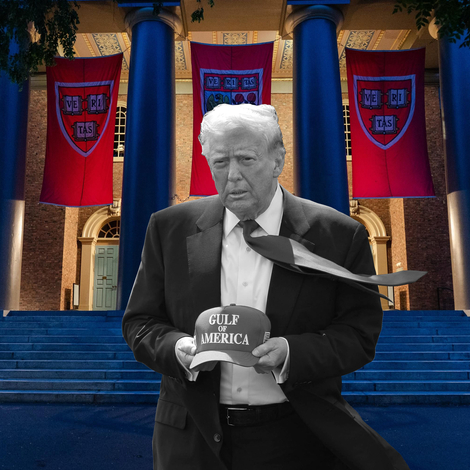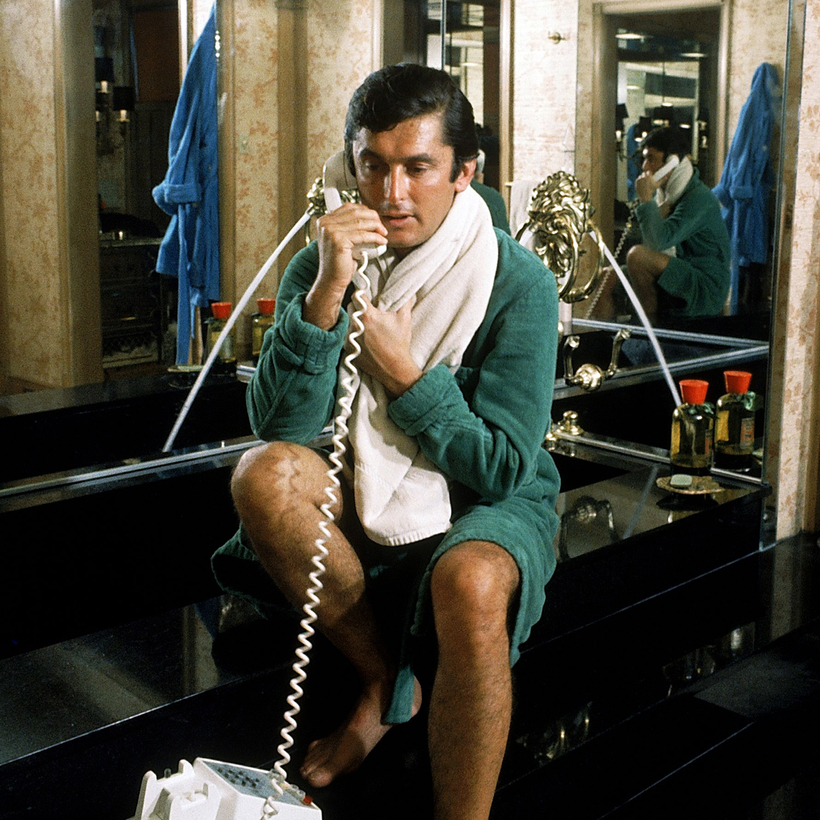Beverly Hills, the 2010s. A man appears outside the Woodland estate of former Paramount head Bob Evans. The gates swing open, and he walks past the ovoid swimming pool immortalized by Slim Aarons, clutching an old videotape. He insists that he’ll hand the tape only to Evans himself. Evans refuses to meet with him. Instead, his butler, Alan Selka, gives the man a tour.
The man had purchased the tape for $20 from a seller hawking the contents of an unpaid storage space belonging to Evans, out of the back of a truck. Among the odd mass of items, the seller even pointed out a stack of yarmulkes that Evans had used years earlier in a Passover dinner he arranged for Roman Polanski. But the man wanted only the tape.
“MASTER COPY - DO NOT LOSE,” it was labeled. The title on the slipcase of the cassette read, “Get High on Yourself NBC 1981.”

I had heard of it, vaguely, but other than a few glimpses in the 2002 documentary adaptation of Evans’s memoir, The Kid Stays in the Picture (produced by Air Mail Co-Editor Graydon Carter), I’d never seen it. And now I, who worked for Evans at the time, and gratefully received the tape from the stranger, was holding it in my hands.
A star-studded affair that was almost immediately forgotten (to the relief of its participants), this bizarre pop-cultural artifact was in many ways ahead of its time. It pre-dated the D.A.R.E. program and Nancy Reagan’s “Just Say No” campaign, as well as the 1990, animated anti-drug special, Cartoon All-Stars to the Rescue. And it set the template for We Are the World and Band Aid: Do They Know It’s Christmas?
And yet this massive, court-mandated extravaganza was practically a co-production of the Church of Scientology, and despite its passionate anti-drug plea, Get High on Yourself was clearly a “Do as I say, not as I do” sort of affair, with illicit substances being used between takes.
“White Shirts”
In 1980, Evans put together a co-production between Paramount and Walt Disney Pictures to adapt E. C. Segar’s “Popeye” into a live-action feature, hiring Robert Altman to direct.
The film was shot in Malta. One day in May, as cameras rolled, Evans got a phone call from back in the United States: he was busted.
As Evans tells it in his memoir, he, his brother, and his brother-in-law had put together a deal for “white shirts”—their code for pharmaceutical cocaine. “Mythical,” Evans described it. “Obtainable to the outside world only by heist.” But the trio had fallen for a D.E.A. entrapment ploy. Evans was charged with 15 felony counts.
In another instance, he could have called Henry Kissinger for help, or Sidney Korshak, the powerful Chicago Mob lawyer. But this time around, Evans couldn’t invoke the power of the Rolodex. Evans was going to need a miracle.
And on October 7, he got one. The judge ruled that Evans could avoid jail altogether if, within one year, he produced a minute-long anti-drug public-service announcement.
Though almost shockingly lenient for today’s punitive climate, these sorts of sentences weren’t totally unheard of. Take, for example, Keith Richards’s 1977 arrest for heroin possession in Toronto. As punishment, he had to play a local benefit for the Canadian National Institute for the Blind. Rumor has it that there was one die-hard Stones fan on the jury. Maybe Evans shared some such similar luck. Or maybe it was his Rolodex that saved him after all.
A TV Special Is Born
The mood of the country was undergoing a drastic shift, and so was the movie business. It was “Morning in America,” as Ronald Reagan’s campaign slogan put it, but twilight for the cynical, highbrow, yet mainstream films that had defined the previous decade, many of which made it to the screen thanks to Evans’s risk-taking tenure as head of Paramount. Ferris Bueller was in; Michael Corleone was out.
America’s “war on drugs” had started under Richard Nixon. Now it was Reagan’s problem. But where Nixon saw it as a law-enforcement issue, Reagan had a different approach. Back in World War II, he had helped make propaganda films for the U.S. Army—and didn’t we win that one? He would do it again, except this time the enemy wasn’t the Axis; it was narcotics.
Shortly before Evans’s sentencing, Cathy Lee Crosby, a former tennis pro turned host of the prime-time reality show That’s Incredible!, appeared before a House Select Committee on Narcotics Abuse and Control to talk about the toll that drugs were taking on the nation. But her crusade wasn’t over. In fact, she had a TV special in mind, title and all. Evans, in a corner, signed on to produce.
The unlikely pair, joined by assorted network bigwigs, plotted the special around a conference table at Evans’s estate. When she suggested they hire 500 extras for a scene preceding the title song, Evans responded, “I’m here just to make a 60-second commercial spot to get something across on drug abuse, not a Metro musical!”

Yet Evans’s showmanship couldn’t be contained. The P.S.A. quickly ballooned from a 60-second spot to a TV special, and, eventually, a whole week of programming. Evans and Crosby even paid a visit to Nancy Reagan at the White House on June 2, 1981, to promote it.
Drugs on the Set
Beginning with Coach of the Year, a Movie of the Week about a no-nonsense, wheelchair-bound football coach who “shows a bunch of delinquent losers how to become winners,” and ending with an airing of the 1977 comedy Oh, God!, the week featured an odd mix of what we would now call “content,” much of which had nothing to do with drugs.

After a couple of lectures, first from Burt Reynolds and then from John Travolta and Olivia Newton-John, came the recording of the song. The cavernous soundstage fills up. Hervé Villechaize, the three-foot-11 actor from Fantasy Island, ambles in next to Magic Johnson, of the Los Angeles Lakers, Bruce Jenner, and Julius “Dr. J” Irving.
The song’s composer, Steve Karmen, best known for “I Love New York,” flits around the set excitedly conducting and correcting the assembled notables on their singing. He later described it as his “most rewarding” project. (A jingle for a failed vaginal deodorant was his “most difficult.”)

Paul Newman was never known for his singing voice, and his low baritone stands out amid the din for its awfulness. But when you consider that his son, Scott, had succumbed to addiction several years earlier, his appearance has a certain gravity in the otherwise camp spectacle.

The program was sponsored by McDonald’s, whose then slogan, “Bein’ Yourself,” was repeated incessantly throughout the song.
Next, Cheryl Tiegs, Dr. J, and Henry Winkler coax Bob Hope to the set. When the 78-year-old entertainer arrives, he’s in fine form as he belts out the tune, swinging and swaying in a stiff three-piece suit.
Although Evans would call the special his “proudest moment,” my attempts to interview the living participants were met with a polite refusal (“That was a long time ago,” Winkler said in an e-mail; “Thanks but no thanks,” said Mark Hamill) or silence (Travolta, Tiegs). Only one agreed to revisit the experience: pop singer Leif Garrett.

As Garrett recalls, Evans had the chaotic proceedings of this particular production under control—so much so that a tense moment occurred when a vial of coke was accidentally dropped by a participant. As it rolled across the floor of the set, Evans simply “stepped on it” to hide it from view.
“Yeah, I was offered coke on the set,” Garrett says. “And I did it!”
In a grim irony, child star and participant Dana Plato, then 17, would later die, aged 34, of a drug overdose.
The Scientology Connection
“NBC’s anti-dope show linked to controversial church cult!” proclaimed the hysterical Weekly World News, pointing out that Crosby was a member of the Church of Scientology and had been “unhooked” from drugs, thanks to its Narconon program. Disdaining methadone and other more traditional methods, the program pushed for a moralistic and willpower-based approach to staying off drugs. Getting high on yourself, as it were.

When People magazine asked Evans about the Scientology connection, he shot back, “It’s a flagrant lie. There’s not even a tinge of Scientology in this.” He may have been telling what he thought was the truth, but according to Scientology expert Tony Ortega, on the shoot day, each celebrity had a personal assistant assigned to them by the Church.
With unfettered access to Evan’s well-known friends, all in one place, bringing more star power to the Church would be like shooting fish in a barrel, and allegedly they had a very big fish in their sights: Muhammad Ali. They were reportedly angling to get the Nation of Islam convert to convert once again—to no success, it seems.
Despite accusations to the contrary, there is no evidence that the Church profited from the special financially. But their involvement suggests that Get High on Yourself was viewed by the Church as a glittering Trojan horse for its tenets. For them, the access to the participating celebrities and subtle messaging to the general public would have been more than a win regardless.
Get High on Yourself launched a format—celebrities singing for a cause—that would become synonymous with the 80s. But did Evans’s special have any effect on the impressionable young minds of the day? Not really. In the mid-1980s, drug use actually increased among some youth demographics.
The idea that a group of oddly matched celebrities singing a jingle could cure a societal epidemic seems quaint by today’s standards. Get High on Yourself and its gentle plea for sobriety may not have changed the world, but it kept the Kid in the picture.
James Sikura, a former longtime development executive for the Robert Evans Company at Paramount Pictures, is a Los Angeles–based independent film producer


